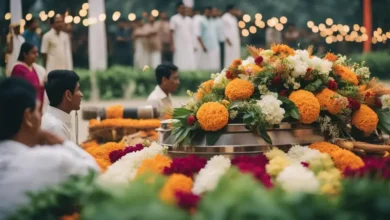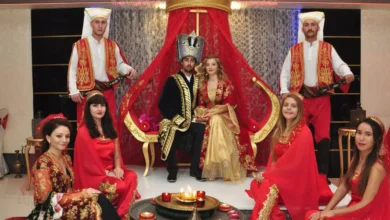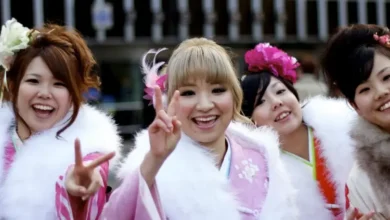Native American regalia is more than just beautiful clothing. It’s a powerful expression of culture, history, and spirituality. Understanding the significance of regalia is crucial for appreciating the depth and complexity of Native American traditions, especially in the context of powwows and sacred ceremonies. This article aims to provide an informative look into this rich aspect of Native American life, respecting the diversity and sacredness involved.
What Exactly is Regalia?
The term “regalia” refers to the ceremonial clothing and adornments worn by Native Americans during specific events. It’s not a costume and should not be treated as such. Each piece of regalia is carefully crafted and often carries deep personal, familial, and tribal significance.
It’s a reflection of a person’s identity, status, and connection to their heritage. Importantly, regalia is not a generic uniform; it varies significantly among different tribes and even within the same tribe.

Key Components of Regalia
Regalia includes a wide array of items, each with its own story and purpose:
See also Norway’s Bunad: A Celebration of Culture and Heritage
Norway’s Bunad: A Celebration of Culture and Heritage
- Clothing: This can include dresses, shirts, leggings, breechcloths, and aprons, made from materials like leather, cotton, or wool. The style, cut, and decoration often vary considerably depending on the tribe and the specific dance or ceremony.
- Headwear: Headdresses, headbands, and feather bustles are integral to regalia. Feathers often have specific meanings related to bravery or spiritual connections. Some headwear, such as large war bonnets, are highly honored and only worn by specific individuals.
- Footwear: Moccasins, often decorated with beads or quillwork, are common. Specific designs may indicate the wearer’s tribal affiliation or dance style.
- Accessories: Necklaces, bracelets, earrings, belts, and other accessories complete the regalia. These items can be made of beads, shells, bone, metal, or other natural materials.
- Dance Sticks and other Objects: Some dances require the use of specific objects, such as dance sticks, staffs, or fans, which are also considered part of the regalia.
- Face Paint: Face paint, made from natural pigments, is often applied for ceremonies and dances, each design carrying meaning.
The Importance of Regalia in Powwows
Powwows are modern intertribal gatherings that feature dancing, singing, and socializing. They are vibrant expressions of Native American culture and a place where regalia plays a central role. The regalia worn at powwows is not just about looking good; it’s about participating in a living tradition, honoring ancestors, and celebrating community.
Regalia as a Visual Language
The designs, colors, and materials of powwow regalia often communicate information about the wearer’s background and status.
- Tribal Affiliation: Certain colors, patterns, and motifs are specific to certain tribes, helping identify dancers.
- Dance Style: Different dance styles, such as Men’s Fancy Dance, Women’s Traditional, and Jingle Dress Dance, have distinct regalia requirements.
- Personal Achievements: Some regalia pieces may indicate personal accomplishments, such as winning a competition or receiving a significant honor.
- Spiritual Significance: The feathers, beads, and other materials often carry spiritual meanings, connecting the wearer to their ancestors and the natural world.
Types of Powwow Regalia
Different dances at a powwow require different types of regalia:
Men’s Dance Regalia:
- Men’s Traditional: Often features a roach (a headdress made from porcupine quills and deer hair), a breastplate, and a decorated breechcloth or apron. The focus is on fluid, powerful movements.
- Men’s Grass Dance: Characterized by long fringe that mimics the movement of grass. This regalia is often more flowing and lighter than some other men’s styles.
- Men’s Fancy Dance: Brightly colored, with elaborate bustles and often two small bustles worn on the arms. This style is known for high energy and intricate footwork.
Women’s Dance Regalia:
- Women’s Traditional: Includes a long dress, often made of cloth or buckskin, adorned with beadwork and sometimes shells. Movement is dignified and graceful.
- Jingle Dress Dance: Features a dress with rows of metal cones or “jingles,” which create a musical sound as the dancer moves. This style is often seen as a dance of healing.
- Women’s Fancy Shawl Dance: Characterized by a colorful shawl worn over the shoulders, mimicking the movement of a butterfly. It’s a more contemporary dance style.
It’s crucial to remember that these are just broad categories. Within each style, there are countless variations based on tribal traditions and personal preferences.
See also Rituals of Gratitude: A Global Look at Harvest Festivals
Rituals of Gratitude: A Global Look at Harvest Festivals
Regalia in Sacred Ceremonies
Beyond powwows, regalia plays an even more profound role in Native American sacred ceremonies. These ceremonies are deeply spiritual events that honor the ancestors, connect with the natural world, and seek guidance from the spirit realm. The regalia worn in these contexts is often even more specialized and carries specific ritualistic importance.

The Spiritual Significance
The regalia in sacred ceremonies isn’t simply decorative. It’s a conduit for spiritual connection:
- Connecting with the Ancestors: Regalia often incorporates designs and materials that have been passed down through generations, linking the wearer to their lineage and ancestral knowledge.
- Communicating with Spirits: Certain regalia pieces, like feathers or particular types of beads, may be believed to facilitate communication with spirits and deities.
- Facilitating Healing: Some ceremonies and the associated regalia are specifically geared towards healing individuals or the community as a whole.
- Marking Transition: Regalia may be worn during important rites of passage, such as coming-of-age ceremonies, marking transitions from one phase of life to another.
Specific Ceremonial Regalia
The regalia used in ceremonies varies significantly based on the specific tribe, the purpose of the ceremony, and the individual performing it. Here are some general examples:
- Medicine Regalia: Individuals with healing responsibilities often have specific regalia, including medicine bags, rattles, and other sacred items. These items are crucial in the healing process.
- Masks: Masks are often used in certain ceremonies and represent specific spiritual entities or ancestors. They’re not to be worn outside of specific ceremonies.
- Ceremonial Robes: Robes, often made from animal hides or woven materials, can carry significant symbolic meanings within a ceremony. They may be adorned with particular patterns or motifs.
- Eagle Feathers: Eagle feathers hold immense spiritual power and are often part of ceremonial regalia. Their handling and use are strictly governed by tribal customs.
- Specific Colors and Designs: The colors and designs used in ceremonial regalia can have specific spiritual interpretations, varying by tradition.
It is essential to emphasize that many ceremonial regalia items are considered highly sacred and are not meant to be seen or discussed outside of specific contexts.
Respect and Understanding
Understanding the meaning and significance of Native American regalia is vital to respecting the culture. Misappropriating or misusing regalia is deeply disrespectful and harmful. Here are some ways to show respect:
Things to Avoid
- Do not call regalia a “costume.” This term trivializes its cultural and spiritual importance.
- Do not touch someone’s regalia without asking permission. It is personal and often sacred.
- Do not take photos or videos of regalia without explicit consent. This is especially important during ceremonies and powwows.
- Do not attempt to replicate regalia without proper understanding and permission. Creating authentic regalia requires specific knowledge, materials, and cultural context.
- Do not purchase mass-produced “Native American” style items from non-Native sources. These items are often made without cultural understanding and can contribute to the further erasure of Native American culture.
Showing Respect
- Educate yourself: Learn about the history and culture of the specific tribes you are interested in. Seek out reliable resources.
- Ask questions respectfully: If you are unsure about something, ask Native people in a respectful and appropriate manner, understanding they may not want to share every detail.
- Support Native artists and businesses: Purchase authentic Native American regalia from reputable Native artists and businesses.
- Attend powwows with respect and an open mind: Follow any guidelines or rules set by the organizers.
- Speak out against cultural appropriation: Challenge the misuse and misrepresentation of Native American regalia and culture.
The Importance of Preservation
Preserving the knowledge and traditions surrounding Native American regalia is crucial for maintaining cultural continuity. This includes:

Passing Down Knowledge
The skills and techniques for creating regalia are often passed down through generations within families. Ensuring that younger generations learn these skills is vital.
Cultural Education
Educating both Native and non-Native people about the significance of regalia is crucial for fostering respect and preventing cultural appropriation.
Support for Native Artists
Supporting Native artists who create regalia is essential to ensure that these traditions continue to thrive. Purchasing authentic regalia directly from artists can provide them with income and help preserve their skills.
Native American regalia is much more than just clothing. It’s a powerful expression of cultural identity, spiritual belief, and historical connection. Whether seen at a vibrant powwow or a sacred ceremony, each piece of regalia holds profound meaning and tells a unique story.
By learning about and respecting the significance of regalia, we can contribute to the understanding and preservation of Native American culture, honoring the rich tapestry of traditions that have existed for centuries. Remember, cultural understanding is a journey, not a destination. By continuing to learn and respect, we can honor the incredible depth and resilience of Native American communities.



